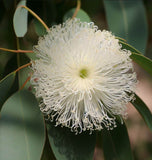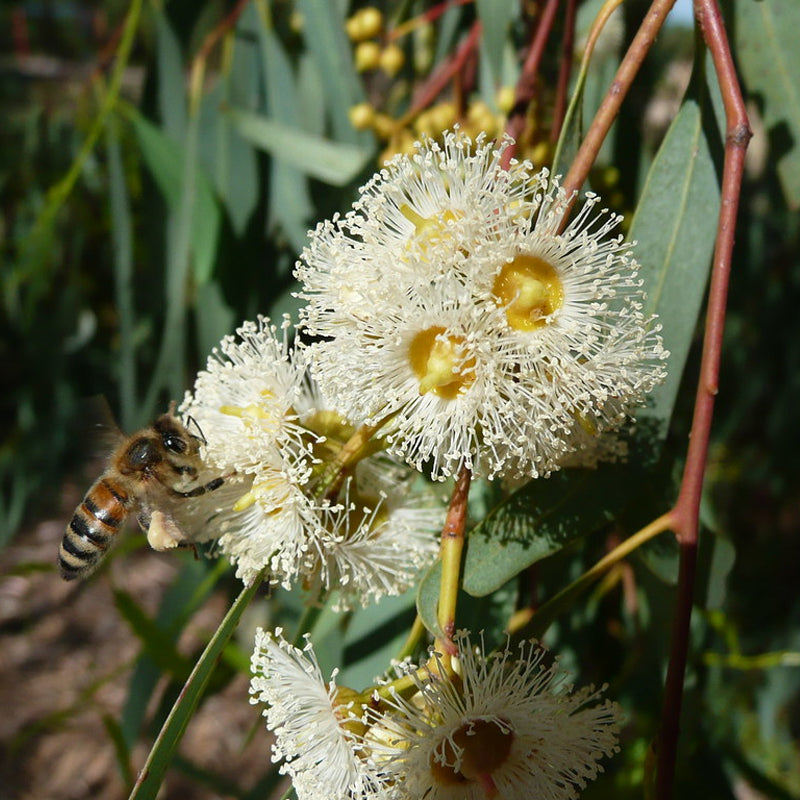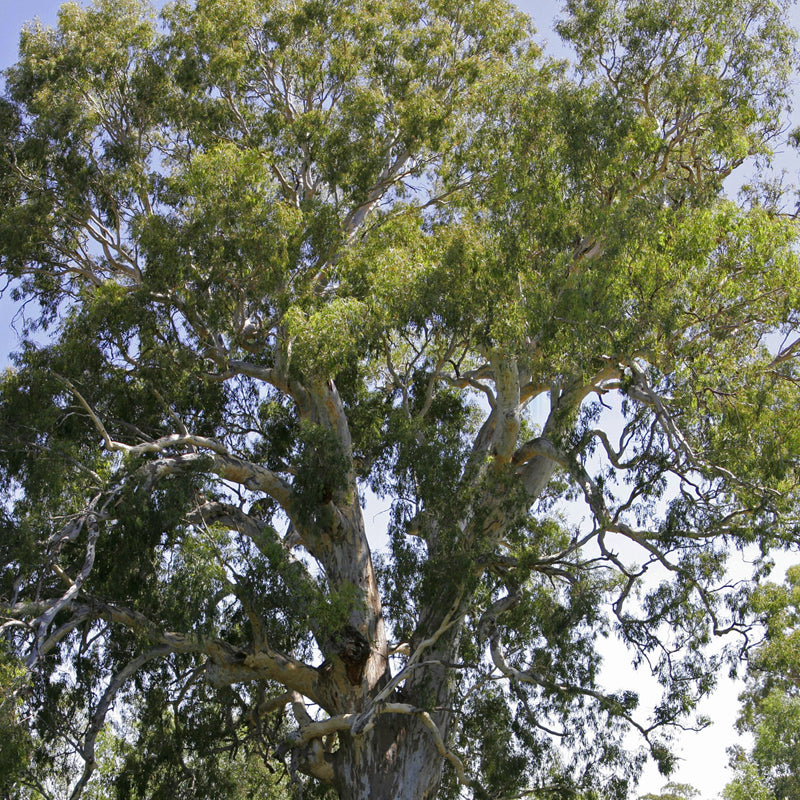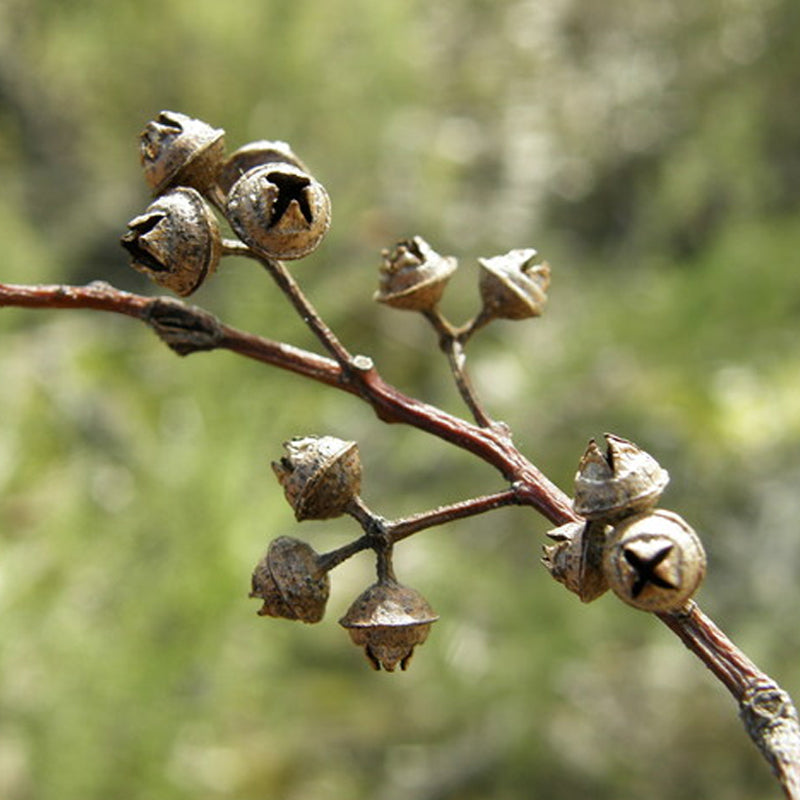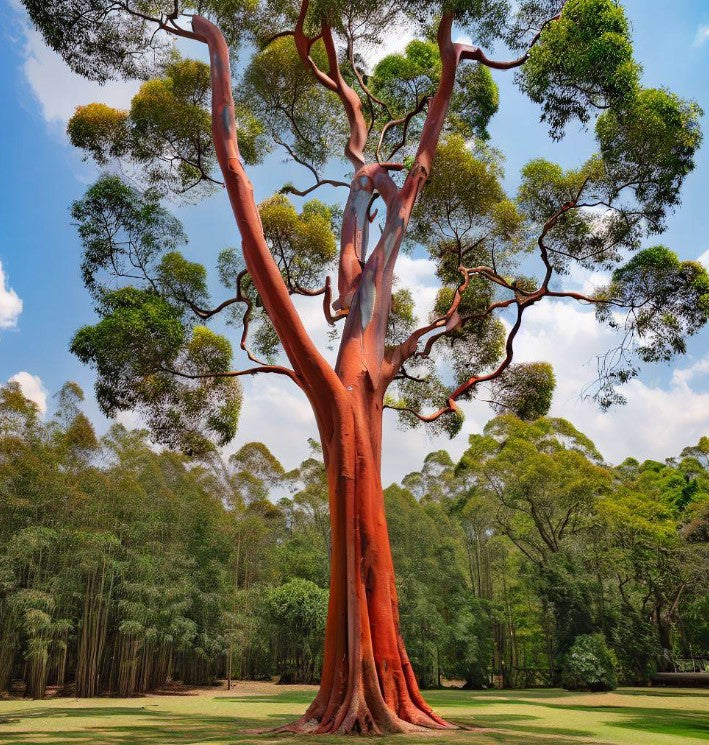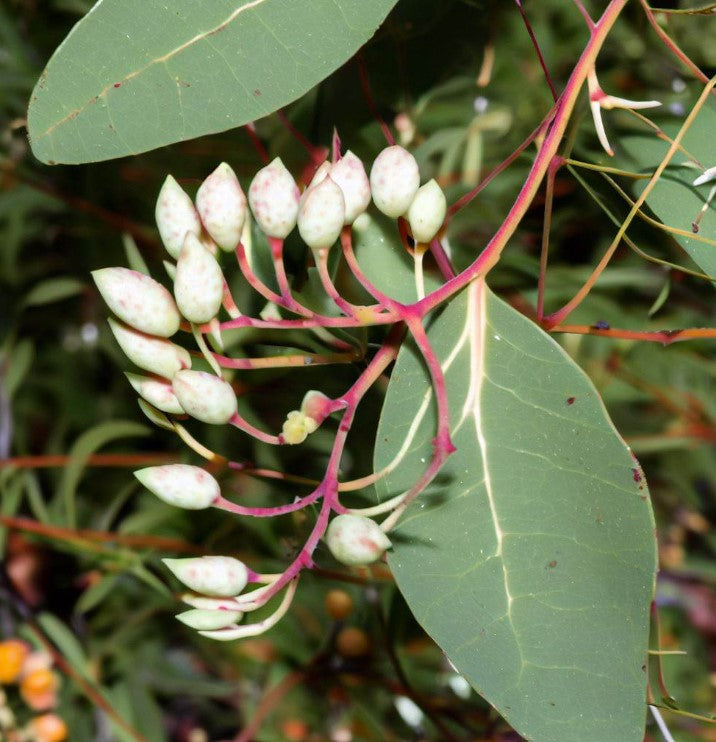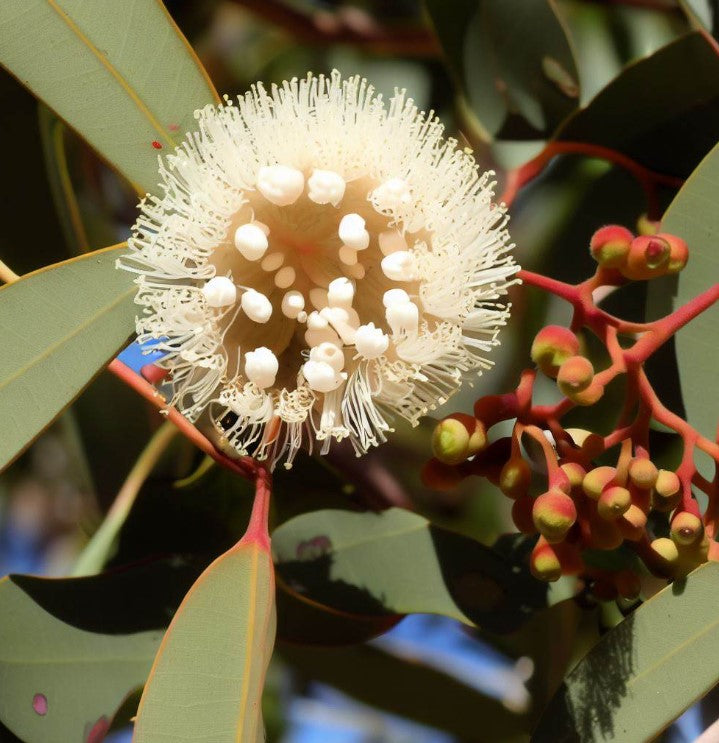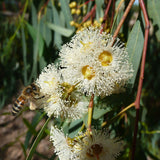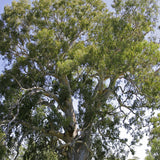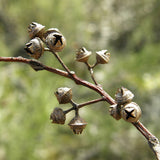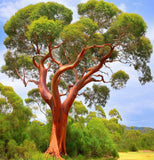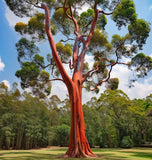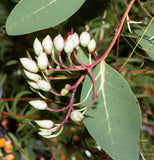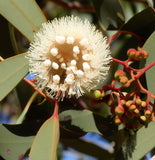Eucalyptus Camaldulensis (Red Gum, River Red Gum)
Eucalyptus Camaldulensis (Red Gum, River Red Gum) is a majestic and iconic tree native to Australia. It is one of the most widely distributed eucalyptus species, found throughout mainland Australia, particularly along waterways and floodplains. Red Gum is known for its impressive size, distinctive bark, and ecological importance.
Size and Appearance: Red Gum is a large tree that can reach heights of 20-45 meters (65-148 feet) or even taller in favorable conditions. It has a spreading canopy with branches that often sweep downward toward the ground. The trunk is typically stout, straight, and can have a diameter of 1-3 meters (3-10 feet). The bark is one of its most distinctive features, ranging from smooth and pale gray on young trees to rough, fibrous, and reddish-brown on mature trees.
Leaves: The leaves of Eucalyptus camaldulensis are lance-shaped, bluish-green, and hang vertically from the branches. They are around 7-17 centimeters (2.8-6.7 inches) long and have a slightly curved shape. The leaves are shed and replaced regularly, contributing to the tree's characteristic litter of dried leaves on the ground.
Flowers: Red Gum produces clusters of creamy white flowers that are borne in large, showy inflorescences. The flowers have numerous stamens and are rich in nectar, attracting a variety of birds, insects, and other wildlife. The flowering period occurs in late winter to spring.
Ecological Importance: Eucalyptus camaldulensis plays a crucial role in Australian ecosystems, particularly along watercourses and floodplains. It provides habitat, food, and nesting sites for a diverse range of wildlife, including birds, mammals, and insects. The tree's flowers and seeds are an important food source for many species, and the hollows in older trees serve as nesting sites for birds and shelter for various animals.
Cultural Significance: Red Gum holds cultural significance for Aboriginal communities in Australia. It has been used by Indigenous peoples for various purposes, including as a source of food, medicine, and material for tools and implements.
Eucalyptus camaldulensis is also widely planted as an ornamental tree and for its commercial value. Its wood is highly regarded for its durability, strength, and attractive color, making it suitable for various applications, including furniture, flooring, and outdoor construction.
It's important to note that while Red Gum is a beloved and ecologically important species, it can be a large tree and may have specific requirements for growth and maintenance. It is best suited for spacious areas, such as parks, large gardens, or along waterways, where its impressive size and ecological contributions can be fully appreciated.
Botanical Name : Eucalyptus camaldulensis
Common Name : Red Gum
Height : 100-150 ft
Spread : 30- 40 ft
Germination Info : Seed requires scarification prior to sowing
Hardiness zone : 9-11
Average seed per ounce : Approx. 125,000

